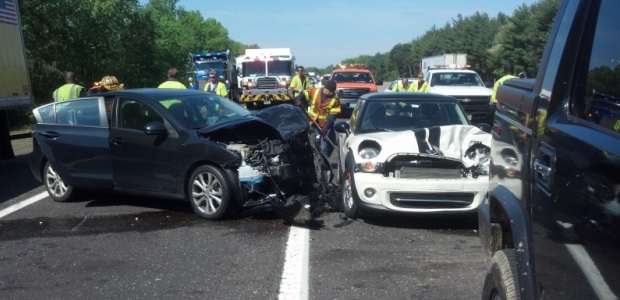
Big Day for CDC: #20Million Memorial and Auto Crash Report
The first is an online memorial to the estimated 20 million Americans who have died from smoking or secondhand smoke since the first Surgeon General's report on smoking and health 50 years ago.
Two Oct. 7 actions by CDC concern long-standing U.S. public health priorities: reducing tobacco use and traffic deaths. The agency created an online memorial at hashtag #20Million to the estimated 20 million Americans who have died from smoking or secondhand smoke since the first Surgeon General’s report on smoking and health was published in 1964. CDC also published a Vital Signs report quantifying how many people were treated in emergency departments because of motor vehicle crashes in 2012 -- 2.5 million – and their lifetime medical costs for their injuries: $18 billion.
What these priorities have in common is that they are preventable causes of deaths and injuries.
CDC said the online memorial was created to illustrate the human toll of smoking and "to honor those people—spouses, mothers, fathers, children, sisters, brothers, friends—who have lost their lives due to a smoking-related illness."
The Vital Signs report says medical costs broke down into approximately $8 billion for crash victims who were treated and released and $10 billion for those who were hospitalized. Lifetime work lost because of 2012 crash injuries cost an estimated $33 billion, according to the report.
"In 2012, nearly 7,000 people went to the emergency department every day due to car crash injuries," said CDC Principal Deputy Director Ileana Arias, Ph.D. "Motor vehicle crash injuries occur all too frequently and have health and economic costs for individuals, the health care system, and society. We need to do more to keep people safe and reduce crash injuries and medical costs."
On average, each crash-related ED visit costs about $3,300, and each hospitalization costs about $57,000 over a person's lifetime. There were almost 400,000 fewer ED visits and 5,700 fewer hospitalizations from motor vehicle crash injuries in 2012 than in 2002, which equals $1.7 billion in avoided lifetime medical costs and $2.3 billion in avoided work loss costs, according to CDC.
"Motor vehicle crashes and related injuries are preventable," said Gwen Bergen, Ph.D., MPH, MS, behavioral scientist in the Division of Unintentional Injury Prevention of the National Center for Injury Prevention and Control. "Although much has been done to help keep people safe on the road, no state has fully implemented all the interventions proven to increase the use of car seats, booster seats, and seat belts; reduce drinking and driving; and improve teen driver safety."
CDC offers an interactive calculator, the Motor Vehicle PICCS (Prioritizing Interventions and Cost Calculator for States), to help state decision-makers prioritize from a list of 12 effective motor vehicle injury prevention interventions. It is available at http://www.cdc.gov/motorvehiclesafety/calculator.